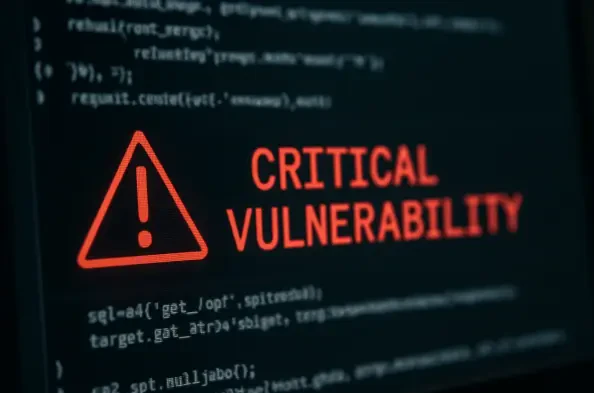Imagine a scenario where a seemingly secure gateway to corporate networks becomes the very entry point for malicious actors, compromising sensitive data and user credentials with ease. A recently disclosed vulnerability in Citrix NetScaler ADC and Gateway platforms has sent shockwaves through the cybersecurity community, highlighting the fragility of even the most trusted enterprise solutions. Tracked as CVE-2025-12101, this cross-site scripting (XSS) flaw poses a severe threat to thousands of organizations worldwide that rely on these systems for secure remote access and authentication. The active exploitation of this vulnerability in real-world attacks underscores the urgency for immediate action. As enterprises grapple with the implications, understanding the scope of this issue and the steps needed to mitigate risks becomes paramount for safeguarding digital environments.
Understanding the Vulnerability’s Scope
Unpacking the XSS Threat Landscape
The core of this cybersecurity crisis lies in the ability of attackers to exploit the XSS flaw within Citrix NetScaler ADC and Gateway systems, enabling the injection of malicious scripts into web pages served by affected instances. Once executed in a user’s browser, these scripts can facilitate a range of harmful activities, from session hijacking to credential theft and even malware deployment. This creates a direct pathway for threat actors to infiltrate corporate environments, particularly those dependent on NetScaler for secure access. The severity is heightened by the fact that security researchers have confirmed active exploitation in the wild, targeting vulnerable configurations. Enterprises must recognize that this is not a theoretical risk but a tangible threat that could already be impacting their systems if left unaddressed, emphasizing the critical need for swift remediation to prevent potential breaches.
Widespread Impact Across Versions and Configurations
Beyond the mechanics of the exploit, the breadth of affected systems adds another layer of complexity to this issue. The vulnerability impacts multiple versions, including NetScaler ADC and Gateway 14.1 prior to 14.1-56.73 and 13.1 prior to 13.1-60.32, as well as FIPS-compliant variants and end-of-life versions like 12.1 and 13.0. Many organizations continue to operate on these unsupported versions, leaving them unable to receive critical security updates. Furthermore, the flaw manifests in specific setups, such as when NetScaler functions as a Gateway with VPN, ICA Proxy, CVPN, or RDP Proxy virtual servers, or when paired with AAA virtual servers for authentication. This nuanced exposure means that not all deployments are equally at risk, but it also requires meticulous auditing of configurations to identify potential vulnerabilities. The diversity of affected systems paints a fragmented picture of risk that demands tailored responses from IT teams.
Mitigation Strategies and Future Preparedness
Urgent Patching and System Upgrades
Addressing this critical XSS vulnerability begins with immediate remediation efforts as outlined by Cloud Software Group, the entity behind Citrix NetScaler. Organizations are strongly advised to upgrade to patched versions such as NetScaler ADC and Gateway 14.1-56.73 or later, or 13.1-60.32 and subsequent releases, to eliminate the risk of exploitation. For users of FIPS-compliant systems, specific patched versions are available and must be applied without delay. Those still relying on unsupported end-of-life versions face heightened risks and should prioritize migration to supported systems as a matter of urgency. While Citrix-managed cloud services benefit from automatic patching, on-premises and hybrid deployments require manual intervention, often under tight timelines. Although the CVSSv4 score of 5.9 suggests medium severity, the real-world impact, given active exploitation, far exceeds this rating, making prompt action non-negotiable for affected enterprises.
Building a Proactive Security Posture
Looking beyond immediate fixes, this incident serves as a stark reminder of the importance of maintaining a proactive approach to cybersecurity. Organizations must establish regular audit processes to identify outdated systems or vulnerable configurations before they become targets for attackers. The continued use of end-of-life versions, as seen in this case, highlights a broader challenge within the industry—delaying upgrades due to cost or complexity can have dire consequences. Additionally, fostering a culture of rapid response to disclosed vulnerabilities can significantly reduce exposure windows. Security teams should also consider investing in advanced threat detection tools to monitor for unusual activity that might indicate an exploit attempt. By learning from this event, enterprises can strengthen their defenses, ensuring that critical infrastructure remains resilient against evolving cyber threats in an increasingly hostile digital landscape.
Reflecting on a Persistent Challenge
Reflecting on the events surrounding CVE-2025-12101, it becomes evident that securing enterprise gateways like Citrix NetScaler ADC and Gateway demands constant vigilance and rapid response. The active exploitation of this XSS flaw reveals how even trusted solutions can harbor significant risks when vulnerabilities go unaddressed. Many organizations face tough lessons about the dangers of operating on unsupported versions or delaying critical updates. However, the detailed guidance provided by Cloud Software Group offers a clear path to mitigation for those who act swiftly. Moving forward, enterprises are encouraged to integrate regular system audits and prioritize timely patching as foundational elements of their security strategy. Exploring automated update mechanisms, where feasible, could further reduce risks. Ultimately, this incident serves as a catalyst for reevaluating how critical infrastructure is protected, urging a shift toward preemptive measures to safeguard against future threats.






